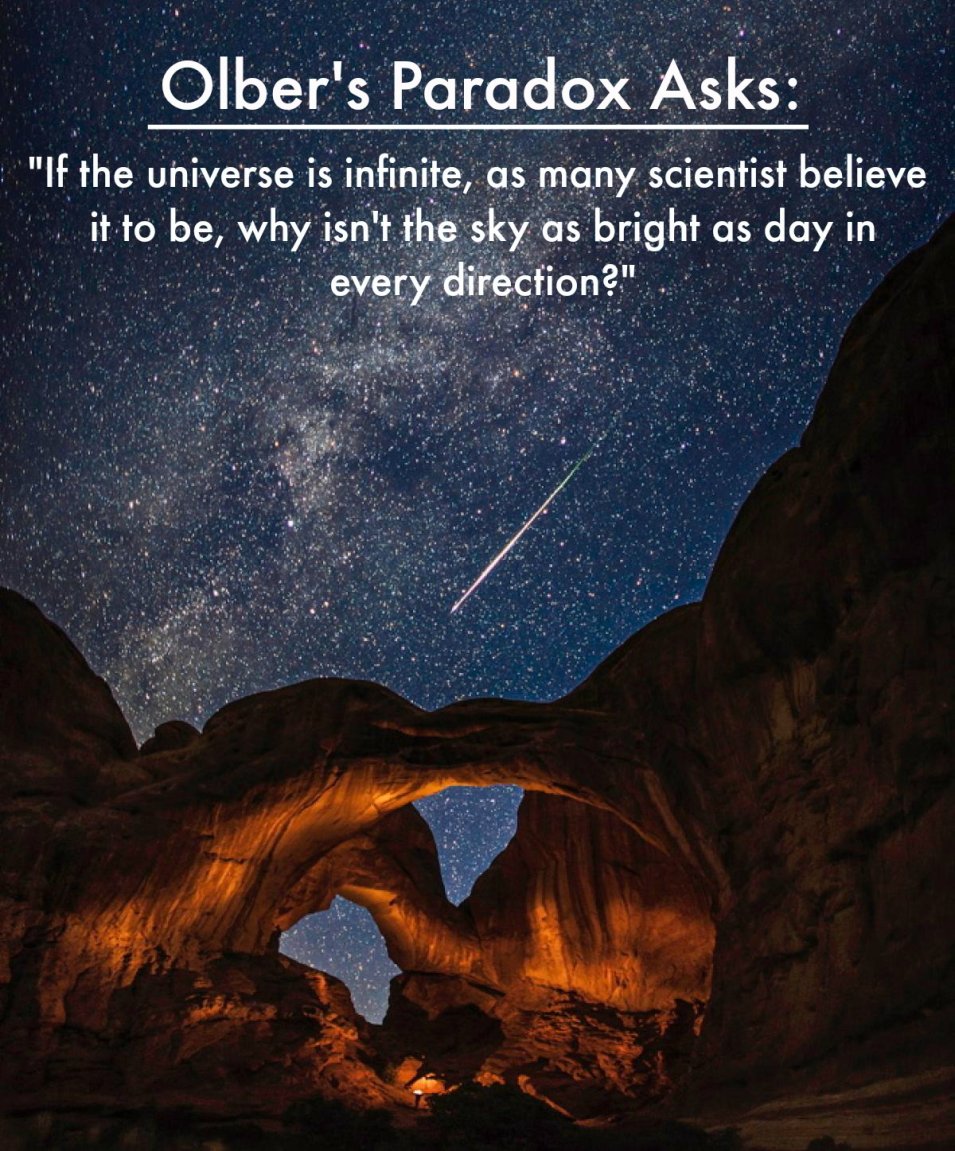

We’ve all seen the fantastic Hubble images; they show millions of galaxies that contain billions upon billions of stars. In our galaxy alone, there are more than 100 billion stars. And in 2010, scientists estimated that there are over 300 sextillion stars in the universe (which looks something like this, 300,000,000,000,000,000,00
Of course, these are just estimates.
But It’s Safe to Say That There Are a Lot of Stars:
Since the universe holds such an unimaginable amount of stars, why hasn’t the light from all of them added up to make the night sky burn with brightness? Well, in an infinitely large and infinitely old universe, this is exactly what would happen. Since light would have an infinite amount of time to reach us, even light from the most distant stars would be brushing their beams across our planet, setting the night sky aglow.
In fact, if space were infinitely old and infinitely large, then no matter what way you looked in space you would be looking at a star. However, we know from experience that space is black (if you don’t know this from experience…well then, you’ll just have to trust me). This is known as Olbers’ Paradox: if the universe is infinite, and is filled with an infinite number of stars, then when the sun goes down, all we should see is a sky full of light.
What Does This Blackness Ultimately Mean?
Well, it seems that the universe is *not* infinitely old. Rather, scientists estimate that the universe is only about 13.77 billion years old.
As you probably know, a light-year is the distance that light can travel in one year (seems self-explanatory now that I’ve typed it out). Since the universe a 13.77 billion years old, light from stars that are 14.77 billion light-years away still has to travel for another billion years before it will reach the Earth. In other words, we can only see light from objects as far away as the distance that light can travel in 13.77 billion years. The light from stars that are farther away has not had time to reach us, so it can’t contribute to making the sky bright.
Another explanation is red shift. As light travels, its wave length alters and, eventually, it gets altered (shifted) so much that we can no longer see the light. It is still there, but it is impossible for us to see with our eyes.
Infinitely Old Universe?

Of course, the light from some stars is exceedingly dim. Nonetheless, if the universe was infinitely old, the light from all of these dim stars should add up to make for one bright sky. Thus, we know that the universe is *not* infinitely old.
But what about the bright blue day? Why is the night sky black and not blue? When you look up into the sky during the day, you see the molecules that make up the earth’s atmosphere scatter the light from the sun in all directions. Ultimately, the blue that we see is a result of this scattering. However, when the Earth is facing away from the sun there is no bright source of light to be scattered. If you were on the moon, which has no atmosphere, the sky would be black night and day.